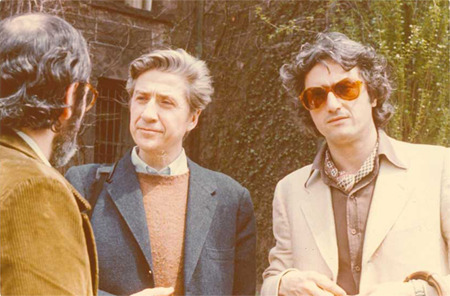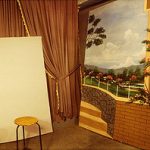The Business of Art: A Conversation with Frederic Tuten
During the taping of this interview Frederic Tuten was at home.
He was at home when we ate lunch at an East Village café, and at home when we walked up the street to have some coffee, and he was at home when we sat down in the back of De Robertis pastry shop on First Avenue between Tenth and Eleventh Streets. Although he’s a quintessential New Yorker, Frederic Tuten is at home in the world. A Bronx native with a PhD in American Literature, he’s lived in South America (where he wrote about Brazilian cinema), and in Europe (where he taught American cinema in Paris).
His books have ranged from subjects as diverse as Mao Zedong (The Adventures of Mao on the Long March), the French Revolution (Tallien: A Brief Romance), Vincent Van Gogh (Van Gogh’s Bad Café) and an adolescent cartoon character (Tintin in the New World). He helped create the graduate program in creative writing at the City College of New York (where he championed the work of Oscar Hijuelos and Walter Mosley), and he’s written about art and about artists such as Roy Lichtenstein, John Baldessari, Eric Fischl, and David Salle. He is generous, passionate, and thoughtful, and his latest book of short stories, Self Portraits: Fictions, is about love, art, and the passion for life. It’s a wise, often funny, dream-like “inventory of the missing,” an elegy dedicated to memory, in which “everything we were and had dreamed of becoming” changes into something else. This coming September there will be a marathon reading of Tuten’s first novel, The Adventures of Mao on the Long March, in honor of its 40th anniversary. That book, which was experimental in 1971, is still experimental because, like all his work, it explores what still needs exploring—the exchange between reader and writer. Partly to welcome that book, and mainly to celebrate his new book, we sat at the table in the old-fashioned coffee shop (where he seemed to know everyone) and we talked. I began by asking about some of his friendships.
John Haskell: When did you meet Alain Resnais?
Fredric Tuten: I met him in ‘71, when Resnais was living in New York. He cast me in one of his films; a very short film called The Year 01. The film is ten minutes long and I have three minutes. And I actually speak! Resnais’ ten minutes are embedded in a longer work by other directors. He loves to say—and this makes me roar—this film “has the distinction of being the debut film of Gérard Depardieu and Frederic Tuten.” If I ever meet Depardieu, I’m going to say…
JH: We got our start together.
FT: We got our start together! (laughter) I’d already loved Resnais’ work before I met him. I’d seen Marienbad, I’d seen Muriel, I’d seen everything I could. I met Resnais as he was coming out of the screening room with Florence Malraux and Susan Sontag at MoMA, and one of the first things I said to him was, I have written about you, and he said, “Oh! I’d love to read it.” I’d written a review of a retrospective of his films that was done at the Museum of Modern Art, and I said, “Fine, I’ll send it to you, where are you staying?” And he said, “No, I’ll come to visit you.” And I said, “Really, come to my house?” And he said, “When may I visit you?” So I made up a day and said come over at five o’clock for tea, and when I told my wife, she laughed in disbelief. And then on the appointed day he was a little bit late so I got worried. I looked out the window and I saw him walking. He had walked from Chelsea, from his apartment right across from the seminary on 10th Avenue. He loves to walk, he walks everywhere. So he came and I made tea; I was very nervous.
JH: You had only met him for—
FT: A few minutes, almost immediately he said—he loves to know these things—“What are you reading now?” “I’m reading the Tintin books.” He asked, “Which period?” “I don’t know, they’re just Tintin books,” I said. “No, no,” he said, “There are different periods, there’s a black-and-white period. The drawing is different at different times, different periods.” I knew nothing about this. Well, it turned out that Resnais was the vice-president of an international comic book club. He loves comic books. His favorite haunt in New York was Forbidden Planet on Broadway and 13th. He’d be there for the latest comic books—he loves American comic books most of all.
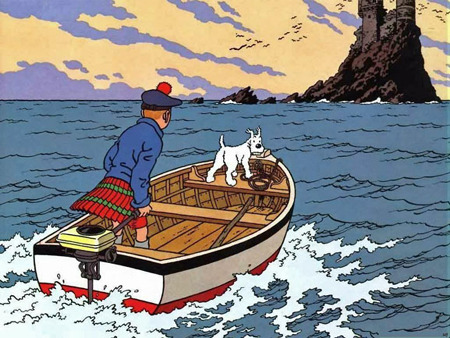
JH: That’s a huge coincidence. Had you been thinking of writing the about Tintin.
FT: No, I was just reading Tintin. I started reading the comics very late in life. I said to Renais, “It’s really a pity that Hergé is dead.” And Resnais said, “Oh, when did he die?” And I said, “I don’t know, I was in Paris a year ago and they said that he was dead,” and I had wanted to interview him, and Resnais looked at me and he said, “That’s so interesting, I just got a postcard from him three months ago.” (laughter) Resnais has that kind of dry humor.
Anyway the long and short of it is—and I found out all this much later—that years earlier Resnais was working on a film of a Tintin book, The Black Island, and they were almost in production. The film was going to be done with masks, like a Greek tragedy, but then the project fell through. Resnais said, “I won’t be here, but Hergé’s coming to New York in a few weeks. If you want to meet him, I’ll write him and tell him so,” and so he did. And so, some weeks later, I went to a little cocktail party here in New York and met Hergé. He said, “Alain Resnais tells me you like my work. What do you like about it?” It’s a very tough question because…
JH: You had to answer.
FT: I had lots of answers in my mind, how I loved the characters, the narrative pacing, but I just blurted out: “I love the blue of your night sky,” and he gave a most warm and beautiful smile. “Oh, I’m so glad,” he said, “because my wife Fanny does the color for me.” (laughter)
JH: The thing about that was, you were almost destined to write Tintin. But hadn’t you already written…
FT: My first book was The Adventures of Mao on the Long March. Roy Lichtenstein did the cover for me. Roy was really the reason it got published because no one wanted to take it. Nobody, nobody, would take the book. They all said, “This is not a novel.” Time and again, rejections would say: “This is not a novel, why are you sending me this?” And finally I said, “OK, I’ll publish it myself.” I don’t know where I got the idea to go to Gibraltar and print it there. And I asked Roy if he would make the book jacket for me. I left him the manuscript and after a few days he phoned and said he would do it. I don’t know why I even had the nerve to ask him. And then this small publisher said, “Well, if Roy Lichtenstein will do a special edition with a lithograph we’ll publish a trade edition,” and Roy agreed. I’ll show it to you one day. An image of young Mao Zedong with a kind of cloud bursting behind him. It’s very beautiful. That was two years before Andy Warhol made his first Mao.
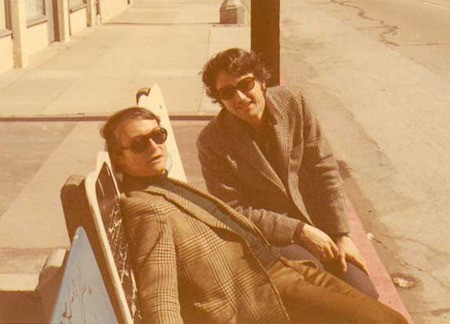
JH: What gets me is that, historically, the whole time, in New York, I mean you mentioned Susan Sontag. I imagine it was a small, close-knit, artistic world in which everyone…
FT: It was a very small world and everyone knew each other. I can’t say—it’s ridiculous—to say “everyone”; it sounds so pretentious. But most of the artists and writers I knew lived downtown. I lived in the East Village, between Avenues C and D on Eighth Street. Most people, like Susan Sontag, lived in the West Village. I met Susan through the painter Joe Raffaele, as he was known then, who was a friend ofPeter Hujar and Paul Thek. They were all friends. I met Susan through them, and we’d go dancing together. I didn’t like to dance, I was embarrassed. When I was a kid it made me nervous if I had to go on the dance floor, and I hated it. But when I saw Susan dance, I thought, if she can do it, I can do it. (laughter) She taught me to do the Twist. After that, I became a dancing fool. I was already, what, 25, 26, or 27. We went a lot. Peter Hujar danced beautifully. Paul Thek was just a miracle to look at—he was so handsome; everyone was in love with him. We would all go to The Dom—
JH: The Dom?
FT: The Dom was on St. Mark’s Place. The whole building was a Polish cultural center and is now a condominium.
JH: Where else would you go?
FT: Well, the place to eat was the Arcadia on Second Avenue, which was just the place, because it was cheap and had good pasta. And then, like a lot of places here, so it went out of business. So, where else did we go? There was always the Second Avenue Deli—now gone. And there was a place on First Avenue and First Street that was wonderful, run by Polish women, and you’d get a thick barley soup with little juniper berries in it. I’d often come here, to this café, De Robertis, for coffee. I lived here practically. I wrote here. There used to be booths. And Johnny De Robertis would let me sit in the back for hours and hours. It was an exciting time. I moved into this neighborhood in ‘62, and I started to meet everyone around ‘64. That’s when the fun began.
JH: But what about literature? Who were the literary people?
FT: The literary people of the period? Well, I got to know James Leo Herlihy, who wrote Midnight Cowboy. He lived down on Seventh Street. I liked him very much. And I got to know a lot of the painters—the painters and writers all hung out together. And then I started writing for Arts Magazine. I was in graduate school. I was getting my doctorate, and I really was in despair because I felt it was unimaginative, uninspiring, and it really was.
JH: The study of literature?
FT: Not the literature, the classroom context. I’d already been an undergraduate and suddenly at 25, I’m back to school, sitting in a room of 200 people, and basically we understood the following: take the classes, take the exams, pass the tests; keep out of everyone’s nose and do the work and you’ll get your doctorate, but it wasn’t very inspiring.
JH: What made you think you could write about art? You hadn’t been studying art and then suddenly you start writing about it?
FT: No, no, that started earlier. I don’t know if I ever told you but when I was a kid in the Bronx I wanted to be a painter.
JH: I studied painting, too, in college.
FT: I didn’t know that. Where did you go to college?
JH: In California, at UC Santa Cruz. I painted, made sculptures, films… I left that later, but for a while that was my thing.
FT: Well, I did that, too, I felt I wanted to be a painter, and I have to be so careful here because I don’t want to sound too Frank McCourt-ish about how poor we were, but we were very poor. So to think that I wanted to be a painter—that was astonishing to me as well as everyone else. I dropped out of high school, I got a job, and I went to the Art Students League for a while. And there I was told how awful I was—that I had no talent. (laughter) I couldn’t do life drawing, and I’d be so upset because I’d see the model and I’d try to do these lines and nothing would look like the model. The teachers were very conservative, and I had one who was mean to me. He made fun of my drawings in front of the class. I should’ve been told, listen kid, you can’t draw the model. You can’t make anything that looks like it’s supposed to look, so forget it, just do what you’re doing. That’s what I should’ve been told. Develop what is strongest in your work, forget your weaknesses, and focus on your strengths, but I was also always writing. I went back to high school and by the time I finished graduate school I had published my first novel.
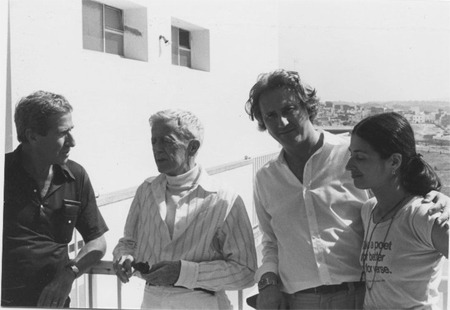
JH: Graduate school at…?
FT: NYU, where I got my doctorate. My friend, Susan Brockman, then the editor atArts Magazine, seeing how bored I was with graduate school said, “You want to write for us?” And I said, “I’d love to.” “Well, go out and write some reviews,” and that’s what I did.
JH: In writing, and in reading too, I think there’s almost this genetic attraction, we like to know what’s going to happen next. And that’s why writing is more conservative in a way than, say, painting.
FT: It’s much more conservative. You think, what can hold any reader’s attention the way that a painting can without a content that’s apparent to us. That’s very hard to do in writing. How do you keep the blood of life in a fiction? How do you keep the thing that we yearn to know about: people? What they think, how they live, how they suffer? How do you keep all of that and yet say it in a way, tell it in a way, that is fresh. E. M. Forster says that from the earliest times when we were sitting around a fire telling stories, if the narrator paused, we listeners would say, “And then?” It’s the “and then” that keeps the story’s motor going. So, how do you have an “and then” with the feeling of tension, suspense, and interest, and somehow, also not to tell the tale as it has always been told. Even de Kooning said that in painting, sometimes you just want a glimpse of content, like the glimpse of a figure in an abstract painting. In a Cubist painting, you see that however broken it may be, that it’s a table, or a guitar.
JH: In a way, literature—which is more conservative than painting or art—because it does have content, I think it has room for more emotion. I may be wrong, but in Self Portraits… You have one line that was just beautiful that seemed to sum up or encapsulate a theme of your book. You say: “If we were to argue again in a museum or in a café or again walk toward the unmediated bed, I would now tell her that art is the inventory of the missing.” And I like that because it’s not just the inventory of the missing—there’s a longing, and there’s all that human feeling about death; a longing for what’s not there. And that can be in painting, but I think your book has a tone and an emotional resonance that you don’t get in most paintings, because you can deal with characters, and your character in this book is someone who we sympathize with and feel that wherever you’re taking us—maybe you weren’t even trying but it seems… Were you thinking of death?
FT: Sure, then and now. And in part because of that, I love life more than ever. The story, by the way, is “The Park Near Marienbad.” There, it’s not so much a fear of death; it’s the sadness of the missing. The people you’ll miss, the streets you’ll miss, the cafés you’ll miss, the sky, everything. That’s why I call art an inventory of the missing. Because it’s a marking and making note of everything you’ve ever loved and will no longer be part of and no longer will see. I’m just saying that there’s a nostalgia projected into the future of what will no longer be. That’s what I truly feel every day, this sense of future loss coupled with a great gratitude for life. I’m happy for every day, with all those feelings that are there: a love of beauty, a love of life, a love of passion, a love of art. Isn’t that a cause for sadness?
JH: The book has that sadness, but it also has the sense of appreciation for those things, because when you’re missing them you’re saying—and in the book, too, you’re seeing them and you’re saying, I love this now.
FT: You’re so right. That feeling of appreciation for life is paramount in “Self Portrait with Beach,” where the older man is looking at a young woman, his girlfriend, on a beach. And it’s both things: it’s about the joy of her youth and what’s perceived as the immortality of youth, and the older man’s wish to be young again to share that youth, and the pure beauty of it, the pure beauty of youth.
JH: But beauty, don’t you think it’s beauty? Whether it’s a woman, or a work of art, or a cloud in the sky; it’s something that’s—
FT: Absolutely. In one of the stories they’re talking about what beauty is. And the wife says what if you took a hunk of cheese and just cut it and it formed something interesting, maybe something even beautiful, is it the same as something formally designed to be beautiful? I don’t remember what the answer was, but I mean, those questions interest me, the idea of transformation interests me.
John Updike wrote a review in The New Yorker of my last novel, The Green Hour,and he said that it seemed to him that “for Mr. Tuten the world has to be mediated by art.” That line struck me, and I play with it in these stories. What is life unmediated by art? What is it after all? It’s just raw nature, beautiful in itself, but it’s the mediation, it’s the transformation in painting, in literature, in poetry, in film that makes us humans with consciousness, with culture.
JH: Well, in the book, although “crazy” things happen, the emotional tone is so… it’s not only real, it’s also kind of mundane, and because beauty is also sometimes mundane, I think in the book you capture that beauty.
FT: Thank you. In the story “The Park in Winter,” a couple are staying at a hotel near the Met in New York—that hotel is gone now—but they’re in the hotel café drinking and flirting with each other. These, by the way, are the same characters who recur in the book in different forms and ages. At the end of the story they’re a bit drunk and she’s been flirting and bantering with the young and handsome waiter. The couple go up to their room to make love; it’s three or four in the morning, snowing outside, and there’s a knock at the door and it’s the waiter. He says: “Will you come with me, Sir?” (laughter) The narrator thinks, oh, maybe I overtipped him and he’s coming back to say, you gave me too much. Or maybe I undertipped him, because what is a waiter doing at three in the morning knocking at your door?
JH: A mundane thought.
FT: Very. But then the narrator gets the point of who the young man really is and what his reason is for being there, and he says, “Oh, I see, we thought that we were waiting for Death, but no, he’s the waiter.” (laughter)
JH: The whole romantic thing I found very moving. For instance, in that scene in the hotel room, it’s not explicit or anything, but the love, the romance and physicality and the emotional love that exists— especially in that story the physicality— it’s very clear. And it’s tricky to talk about sex in a way that is civilized, and I’ll just say for the record, that you are one of the most civilized people I know.
FT: Does that mean effete? (laughter)
JH: No. And I’ll also say… You’re a gentleman, and that comes out in the writing, in the tone of the story.
FT: Thank you John. Well, that’s how I felt about Roy. You can see his humor in the paintings, you see his irony, you see his playfulness, and his complete dedication to painting. Not to violate art, not to break it, not to just do some Dada trick of breaking art to make art, no. To stay within boundaries—this is what we were talking about with fiction before— but also to make it fresh but be part of the whole tradition of art. In painting it’s the completely unified field of images and colors and marks, so whether it’s a Jeff Koons Popeye painting or a painting of shepherds in a field in the 16th or 17th century, their essential structure is the same, the aesthetic meaning that brings it together is the same, and Roy was into that sense of continuity. I see that in Roy in everything he did. Not that he ever said this to me, but I believe he was in regular and civilized conversation with the history of art and artists.
JH: To the paintings of the past.
FT: He was talking with the art of the far and near past.
JH: Without calling too much attention to itself. That’s the gentlemanly part. And one thing you do is, each story is dedicated to someone, and were you, as you wrote, were you…
FT: Yes. I had either someone in mind when I was writing each story, or when it was over. Certain stories were done just from of a feeling of love for my friends. There’s a story for Eric Fischl. I gave it to him on his birthday. It was his birthday present. Or the “Ship at Anchor,” the story about the little boy who meets the pirates, that story was written specifically for my godson, Kenji Coleman Yamada, for his seventh birthday.
JH: So it’s not the facts of a person’s life in the story; it’s more that the feeling you have for that person that gets—
FT: Yes. In my mind I thought, oh, maybe Kenji will be happy one day to open up the book and see that there’s a story for him. It might mean something to him, more than any present I could give him now. The book itself is dedicated to Alain Resnais because he is my second oldest friend—old in both age and time, and I love him.
John Haskell is the author of the short story collection, I Am Not Jackson Pollock, the novel, American Purgatorio, and most recently, Out of My Skin. He has contributed to magazines such as A Public Space, n+1, Black Clock, Conjunctions, andMcSweeney’s, and recently received a NYFA grant and a Guggenheim Foundation grant.

